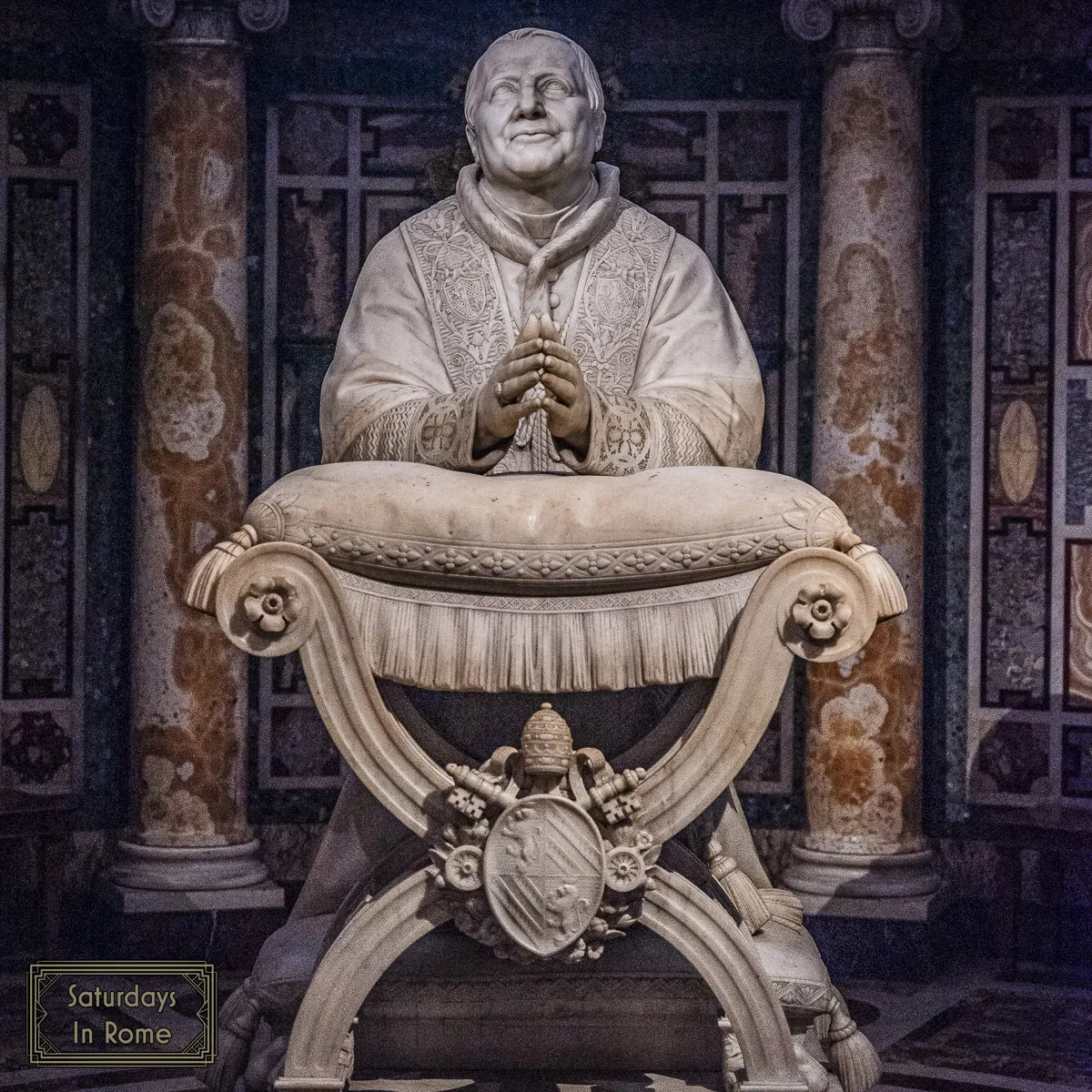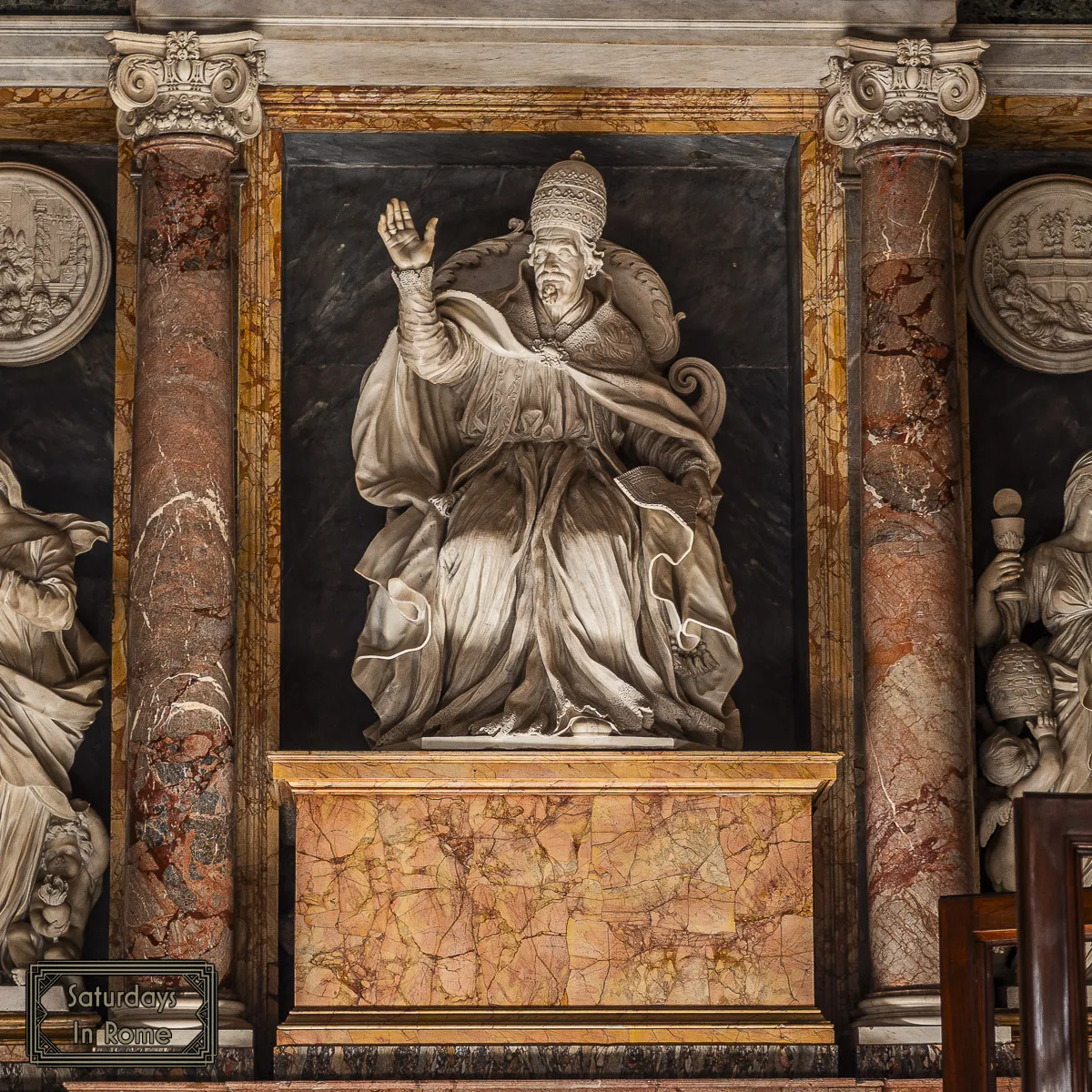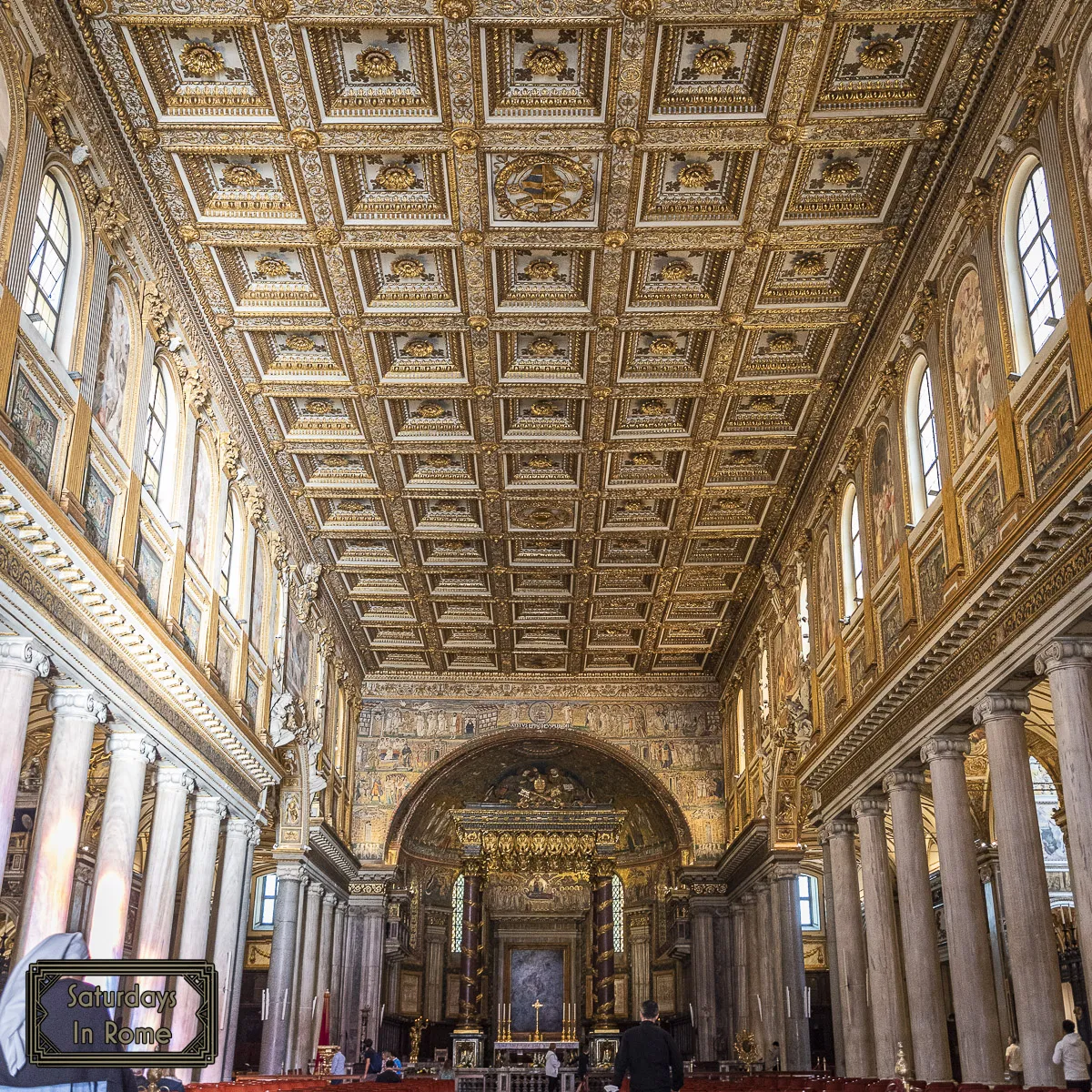The Basilica Of Saint Mary Major In Rome Is A Destination
The Basilica of Saint Mary Major in Rome is one of the four major papal basilicas in Rome and because of the amazing history, it is a must-see destination.

Built on the summit of the Esquiline Hill, the Papal Basilica of Saint Mary Major (Basilica Papale di Santa Maria Maggiore) is one of the four major papal basilicas in Rome (St. Peter’s Basilica, St. Johns and St. Paul are the other three), and among these basilicas, St. Mary Major is the only one to have kept its original structure, though it has been updated and expanded over the years. It is also one the seven pilgrim churches of Rome, which I’ve detailed below.
Need Help Planning?
- Cheap Flights: Find The Most Affordable Flights.
- Accommodations: From 1 to 5 Stars And More.
- Car Rentals: Affordable Travel Across Italy.
- Sightseeing Tours: Explore Some Amazing Tours.
- Buying An eSIM: Stay Connected In Italy.
This post includes affiliate links.
The Location Of St. Mary’s Basilica
Tradition has it that the location of the Basilica of Santa Maria Maggiore was chosen because it was the site where the Virgin Mary appeared in a dream to Pope Liberius in which she asked that the church be built in that location in her honor.

The Seven Pilgrim Churches Of Rome
The tradition of visiting all seven churches was started back in the 16th century in order to combine conviviality and the sharing of a common religious experience through the discovery of the history of the early Saints. In the beginning, a few friends and acquaintances would gather before dawn and set out on their walk. At each church, there would be prayer, hymn singing, lunch breaks and a brief sermon. The path covers twelve miles in Rome, but if you aren’t interested in walking that far, public transportation and taxis can make the journey that much easier.
The “Classic Seven Pilgrim Churches”
The official list of the Seven Pilgrim Churches changed in 2000 when Pope John Paul II had changed the 7 by removing San Sebastian and adding as a replacement the Sanctuary of the Madonna of the Divine Love shrine. When I was looking at the events of the Jubilee 2025, I noticed they list the classic seven churches as the official version, leaving off the Sanctuary. I could not find any information online regarding the change back, so I asked the tour guide if San Sebastian is on the list, and she said it was and that Pope Benedict had made the change. I still can’t find anything official on this, so I suspect this has more to do with some of the more devout respecting the original 7 and not the updated version. Whatever the reason, if you have any information, please let me know!
In addition to the Basilica of Saint Mary Major, there are six other basilicas, and optionally a shrine, that make up the Seven Pilgrim Churches of Rome:
- The Vatican And St. Peter’s Basilica
- The Basilica of St. John Lateran
- The Papal Basilica of St. Paul Outside the Walls
- The Basilica of Saint Lawrence Outside The Walls
- The Basilica of The Holy Cross in Rome
- The Basilica of St. Sebastian Outside The Walls
- (Non-Classic) The Sanctuary of Our Lady of Divine Love
The Seven Churches Visitation is a Roman Catholic tradition to visit seven churches on the evening of Maundy Thursday during Lent, but it is also done on Wednesday of Holy Week. During the Seven Churches Visitation, the faithful visit several churches to pray before the Blessed Sacrament in each church. Depending on the timing, you might encounter church services that you can either attend or wait until they are finished, before you can have a detailed tour of the church.
Why Is It Called Saint Mary Major?
Since its creation, the building on the site of Basilica of St. Mary Major has gone by many names. It was known at the Liberian Basilica and Santa Maria Liberiana in reference to Pope Liberius’ vision. It was known as Saint Mary of the Crib (Sancta Maria ad Praesepe) because of a relic from the nativity crib that was brought to the church. Another name sometimes used is Our Lady of the Snows. This is in reference to another vision of the Virgin Mary and a snow that fell on Esquiline Hill in August, at the height of summer. It maintains the name Major because of its important status as a major papal basilica, even though including Major in the title is not used more widely.
The Sistine Chapel
This is not the more famous Sistine Chapel in a Rome Basilica that you can enjoy when you visit the Vatican Museums and Sistine Chapel or if you are allowed to elect a new Pope. That one was built at the request of Pope Sixtus IV around 1473. This Sistine Chapel was built at the direction of Pope Sixtus V more than 100 years later and contains his tomb.

Is The Church Of Saint Mary Used By The Pope?
Since the Basilica of Saint Mary Major is a papal basilica, it is used by the pope on occasion. He presides over the annual Feast of the Assumption of Mary on Ferragosto. The canopied high altar is reserved for use by the pope alone. The pope gives charge of the basilica to an archpriest, usually a cardinal, and I will go into a little more background on one specific Cardinal that I am familiar with below, Cardinal Bernard Law.
Who Is buried In Rome’s The Basilica Of Saint Mary Major?
Being such an important religious site, there is a long list of Popes and other dignitaries that call Saint Mary’s Basilica their final resting place. Among the Popes interred here are:
- Pope Sixtus V
- Pope Clement VIII
- Pope Honorius III
- Pope Clement IX
- Pope Nicholas IV
- Pope Pius V

Other notable perpetual residents are:
- Gian Lorenzo Bernini – The leading Italian sculptor and architect of his time. His art is found all over Rome and in particular at the Borghese Museum due to his relationship with the powerful Cardinal Scipione Borghese and his uncle Pope Paul V (formerly known as Camillo Borghese).
- Pauline Bonaparte – The younger sister of Napoleon, her second marriage was to another Camillo Borghese (i.e. not Pope Paul V).
- Junio Valerio Borghese – Another member of the House of Borghese, this delightful gentleman, nicknamed The Black Prince, was a Navy commander during the reign of Benito Mussolini and the Fascists. He was a prominent hardline Fascist politician and in 1970 he took part in the planning of an aborted neo-fascist coup and he escaped to Spain where he spent the remaining years of his life.
The Escape Of Cardinal Bernard Law
Bernard Francis Law was an American cardinal of the Roman Catholic Church, he was appointed Archbishop of Boston by Pope John Paul II in 1984 and he is known largely for covering up the serial abuse of children by Catholic priests.

In 2001, Cardinal Law was named as a defendant in several high-profile cases involving pedophile priests. In 2002, after the public exposure of the cover up of pedophile priests by Cardinal Law, he submitted his resignation and it was accepted. Cardinal Law had become the central figure in a scandal of criminal abuses, denials, payoffs, and coverups that resonated around the world. Within weeks, the Cardinal moved from Boston to Rome and eventually was appointed as the Archpriest of the Basilica di Santa Maria Maggiore.
How To Visit The Basilica Of Saint Mary Major
If you want to visit The Basilica of Saint Mary, you are in luck because it is very centrally located at: Piazza Santa Maria Maggiore, which is only a couple of blocks from the Termini train station. You can reach Termini Station on Metro A or B at the stop named Termini. You can either walk or take the ATAC buses: #714, #360 or #649. There is also a taxi stand at Termini if the bus isn’t your style.

The Basilica Of Saint Mary Major Visiting Hours
When visiting Saint Mary’s Basilica, please be aware that there is a dress code. You are requested to wear appropriate clothing that covers the shoulders and knees. While this is generally the rule at all houses of worship, and in particular at the major basilicas, it is worth noting that my experiences during the summer have been a bit more flexible. Men definitely can’t wear hats, but wearing shorts didn’t seem to be much of a concern. I’ve noticed similar flexibility with women as well.
The basilica is popular with tourists and pilgrims alike, so be prepared for long lines if you are visiting during the summer at popular times. I recommend getting there early as the hours for the Basilica are: daily from 7:00 am to 6:45 pm. On Sundays and feast days it is open from 9:00 am until noon.

How To Get Tickets For The Basilica of Saint Mary Major
There are no tickets needed to visit the Basilica of Saint Mary as entry is free. It is a working church, however, so expect to have to wait to enter if a mass is being celebrated.






